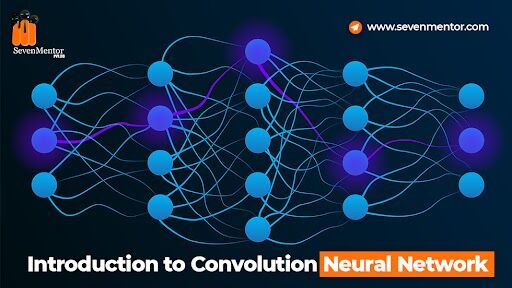Introduction to Convolution Neural Network
Convolutional neural network (ConvNet) is a type of artificial neural network commonly used in deep learning. It is specifically designed to process data with a grid-like structure, such as images or time series data. ConvNets are known for their ability to automatically learn and extract features from input data, making them highly effective in tasks such as image recognition and computer vision. In this blog we will discuss Introduction to Convolution Neural Network. They achieve this by using convolutional layers that apply filters to the input data, followed by pooling layers that reduce the spatial dimensions of the output. This hierarchical neural network (CNN) is a type of artificial neural network commonly used in deep learning. It is particularly effective in image recognition and processing tasks due to its ability to automatically learn and extract features from raw pixel data.
For Free, Demo classes Call: 7507414653
Registration Link: Click Here!
CNNs consist of multiple layers, including convolutional layers that apply filters to input data, pooling layers that downsample the output, and fully connected layers that perform classification or regression tasks. These networks have revolutionized computer vision applications and have been successfully applied in various fields, such as self-driving cars. SevenMentor’s Machine Learning Course in Pune is the perfect way to dive deep into this exciting field and gain hands-on experience with cutting-edge tools and technologies.
ConvNet is a type of artificial neural network that is commonly used in deep learning. It is specifically designed to process data with a grid-like structure, such as images or time series data. ConvNets are composed of multiple layers, including convolutional layers, pooling layers, and fully connected layers, which allow them to learn hierarchical representations of the input data. These networks have been widely successful in various computer vision tasks, such as image classification, object detection, and image segmentation.
For Free, Demo classes Call: 7507414653
Registration Link: Click Here!
Steps in a convolutional neural network include inputting the raw data into the network, applying convolutional filters to extract features, pooling to reduce spatial dimensions, and passing the resulting features through fully connected layers for classification or regression. The network then undergoes a training process where it learns to optimize its parameters through backpropagation and gradient descent. This iterative process allows ConvNets to continuously improve their performance on the given task by adjusting the weights of their connections. include:
For Free, Demo classes Call: 7507414653
Registration Link: Click Here!
- Convolutional layers: These layers apply a set of filters to the input data, extracting local features and capturing spatial relationships.
- Pooling layers: These layers downsample the output of the convolutional layers, reducing the spatial dimensions while retaining important features.
- Fully connected layers: These layers connect every neuron from the previous layer to every neuron in the next layer, allowing for complex relationships and high-level feature learning.
- Activation functions: These functions introduce non-linearity by inputting the raw data into the network, applying convolutional filters to extract features, using pooling layers to reduce spatial dimensions, and finally feeding the extracted features into fully connected layers for classification or regression.
Do visit our channel to learn More: Click Here
The process of training a ConvNet involves iteratively adjusting the weights of the network based on the difference between predicted and actual outputs, using techniques like backpropagation. Enhance your skills and dive into the world of Machine Learning with our hands-on Machine Learning training in Pune
Author:-
Aniket Kulkarni
Call the Trainer and Book your free demo Class for Machine Learning now!!!
© Copyright 2021 | SevenMentor Pvt Ltd.

